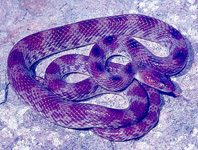Abstract
The chorionic structure of the eggs of sixteen species of Corixoidea (Ectemnostega (Ectemnostega) quadrata (Signoret), E. (Ectemnostegella) quechua (Bachmann), Trichocorixa mendozana Jaczewski, Centrocorisa kollari (Fieber), Heterocorixa brasiliensis Hungerford, Sigara (Aphelosigara) tucma Bachmann, S. (Tropocorixa) denseconscripta (Breddin), S. (T.) platensis Bachmann, S. (T.) rubyae (Hungerford), S. (T.) santiagiensis (Hungerford), S. (T.) schadei (Hungerford), S. (T.) yala Bachmann, Tenagobia (Incertagobia) incerta Lundblad, T. (Fuscagobia) fuscata (Stål), T. (Schadeogobia) schadei Lundblad, and T. (Tenagobia) pulchra Hungerford) is described for the first time using scanning electron microscopy. In addition, the eggs of some of these species are described based on color and morphometry. The sculpturing of the chorion and the structure of the micropylar area here in studied using scanning electron microscopy together with the length of the stalk distinguish the eggs of the genera (except Sigara, genus without a uniform pattern on the sculpturing of the chorion) and subgenera (including Aphelosigara and Tropocorixa) of Corixoidea present in Argentina. The above mentioned characters, together with the egg length, proved to be useful for the identification of the Argentinian species. An identification key to the eggs of Argentinian species of Corixoidea based on the material herein studied, and additional data present in the literature, is provided.

